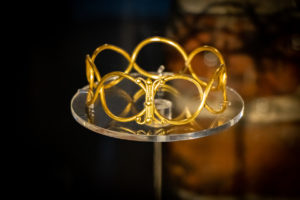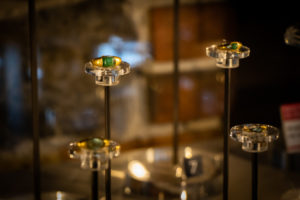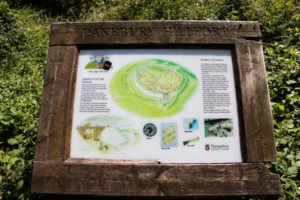Buried for safe-keeping below the floor of a house in Roman Colchester during the Boudican revolt in AD 61. The treasure consists of 26 Roman republican coins, mostly silver, and which had been kept in a bag; the remains of a small wooden and silver jewelry box or pyxis; a gold bracelet; two gold armlets; a copper-alloy amulet necklace or bulla; a silver armlet decorated with images of panthers; two silver bracelets; five gold finger-rings, one of which is decorated with the image of a dolphin; a silver chain and loop; a pair of gold earrings; a pair of pearl earrings; and a tiny glass intaglio engraved with the image of a panther. These represent items of male and female jewelry, and the recurring motif of panthers may indicate an association with the name of the owner. One of the coins is a fascinating silver legionary denarius of Marcus Antonius, issued in 32-31 BC: it is inscribed ‘Legio XVII Classica’ and it may represent an issue of Roman military four-monthly pay on campaign or a special one-off payment on the day before the famous naval battle of Actium. The Fenwick treasure includes some beautiful jewelry and tells a remarkable story, but the silver legionary denarius has a remarkable story all of its own










